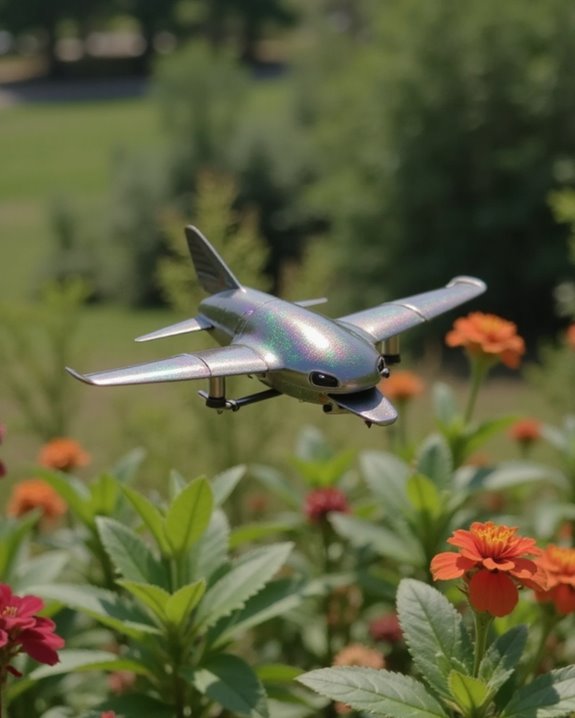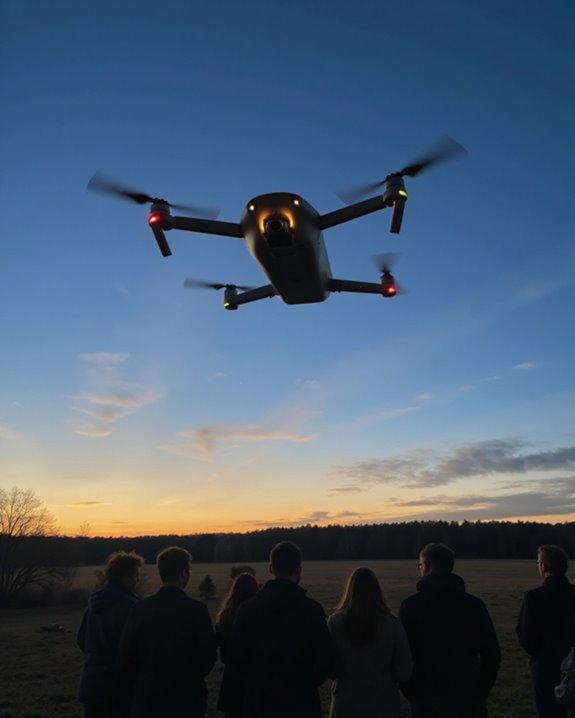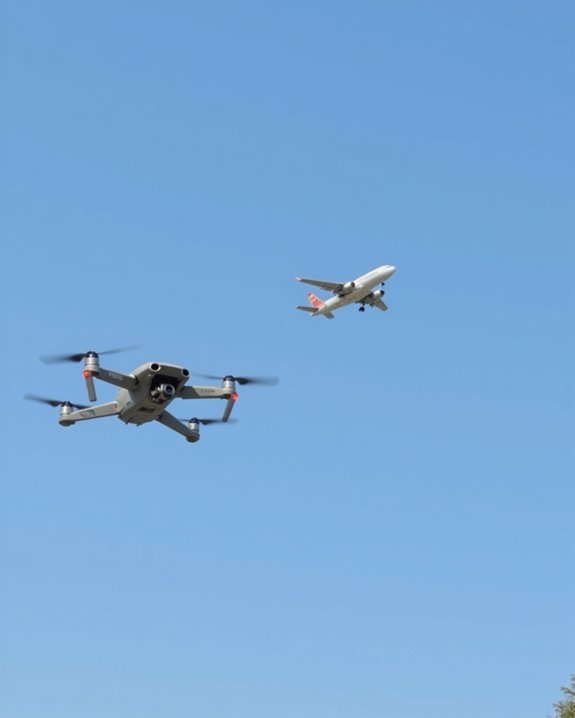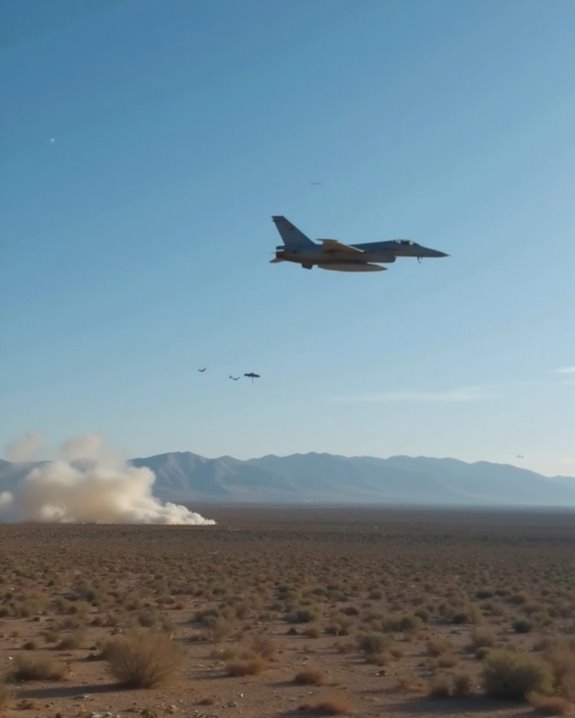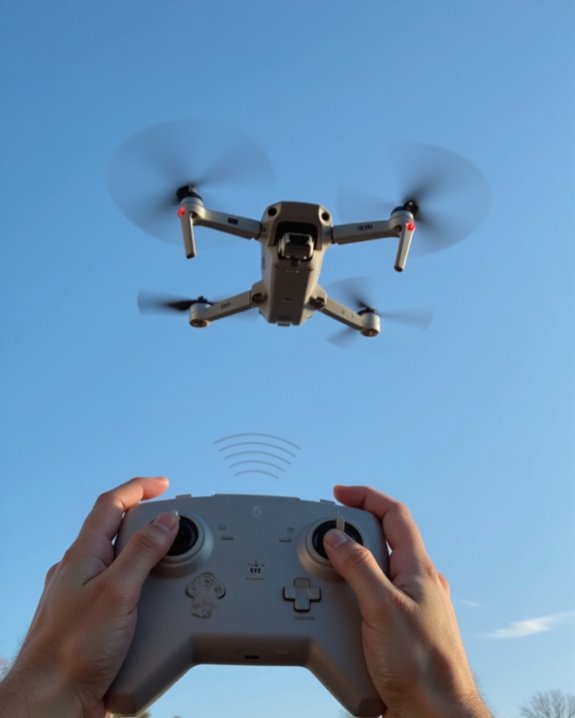The hummingbird drone was invented to zip through urban mazes and deliver stealthy surveillance in places regular drones would totally wipe out—think darting through windows or hovering by power lines! Driven by DARPA’s quest for agile, nature-inspired tech, this 19-gram mechanical marvel mimics real hummingbirds, flapping its wings for crazy maneuverability. Perfect for military missions, it packs a tiny camera for real-time intel in tight spots. Curious how such mini wings actually work or where it might be headed next?
Key Takeaways
- The Hummingbird drone was invented for discreet military reconnaissance, especially in complex urban environments where traditional drones struggle.
- Its design mimics real hummingbirds to enable agile flight, hovering, and navigation through tight spaces like windows or alleys.
- The drone provides real-time high-definition surveillance footage for tactical operations while blending in to avoid detection.
- It was developed to overcome engineering challenges of making small, energy-efficient, and stable flying robots for extended missions.
- The technology also addresses broader security, rescue, and monitoring needs beyond military use, influencing drone innovation and raising ethical considerations.
DARPA’s Vision for Next-Generation Aerial Technology
When you think of futuristic flying robots, you might imagine something out of a sci-fi movie, but DARPA—the Defense Advanced Research Projects Agency—has been making that vision a reality! Their ambitious Nano Hummingbird project set out to create a tiny, flapping-wing drone for military reconnaissance, especially in tricky urban settings. Weighing just 19 grams and boasting a wingspan of 16 centimeters, this little marvel could hover, zip through doorways, and even fly in gusty winds. It carried a video camera for surveillance, making it a spy gadget James Bond would envy. Still, with such advanced capabilities, questions about ethical implications and regulatory hurdles quickly buzzed in. After all, who decides where and how these super-sneaky bots can fly—or what they can film? The development of compact UAVs like the Nano Hummingbird paved the way for more versatile and portable systems such as the RQ-11 Raven UAV, which offers exceptional portability and battlefield reconnaissance capabilities.
Mimicking Nature: the Inspiration From Hummingbirds
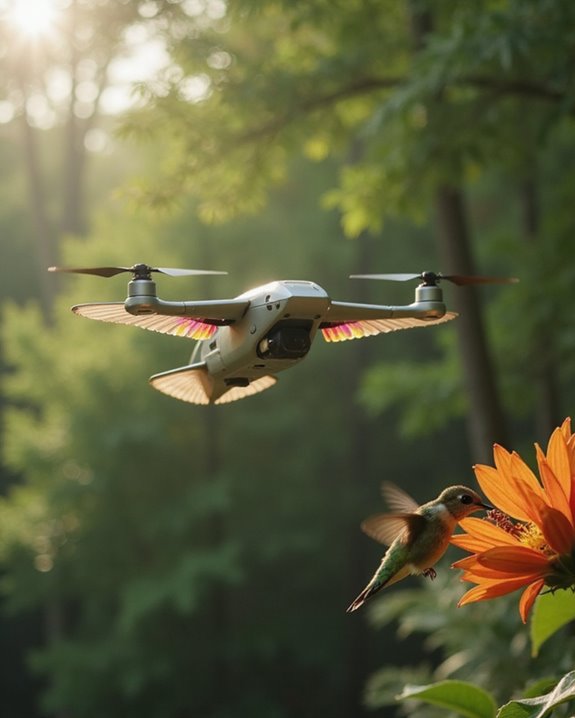
Although drone technology might seem like pure science fiction, much of its design actually comes straight from nature’s playbook—especially the hummingbird! Engineers were captivated by the hummingbird’s compact, powerful wings and ability to hover perfectly in place—something most birds can only dream of. These tiny aviators flap their wings in ways that create mini tornadoes, generating lift on both upstrokes and downstrokes, which is pretty amazing. For scientists, hummingbirds have become educational models, showing how to design drones that are agile and energy-efficient. Artistic representations, from colorful illustrations to mechanical sculptures, also celebrate their dazzling aerial moves. By copying the hummingbird’s wing shape and flight mechanics, creators have made drones that can zip, hover, and twist through tight spaces with superhero-like skill! Some of the most advanced bird drones, like the Zing Go Go Bird, even feature flapping wings that mimic real bird flight to enhance agility and control.
Meeting Military Needs for Urban Surveillance
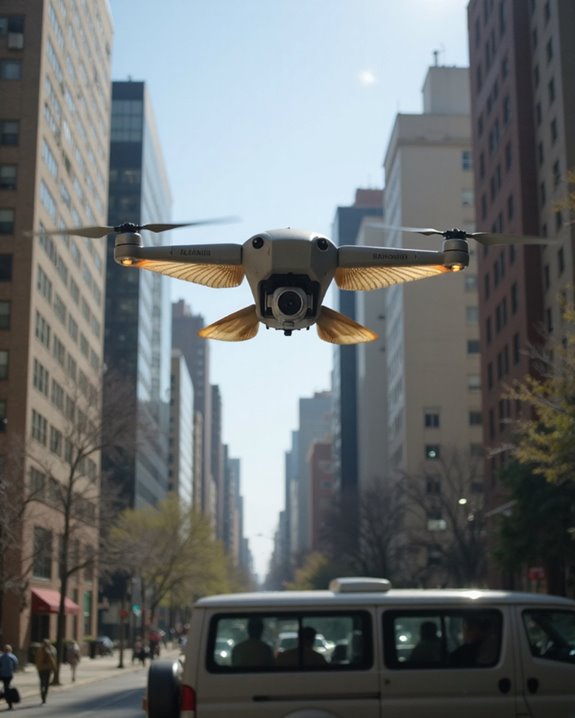
Why do modern militaries care so much about tiny, bird-like drones? Well, imagine trying to sneak around a city full of tall buildings and tight alleyways—pretty tough, right? That’s where clever Urban Tactics come in! The Hummingbird drone is a marvel, designed for Surveillance Methods in tricky urban landscapes. It’s small enough to zip through open windows, hover beside power lines, or even fly indoors without raising eyebrows. Its robotic wings flap just like a real bird’s, helping it blend in and avoid detection (no need for a fake mustache disguise!). With a high-definition camera, the drone provides real-time video, making it perfect for tactical reconnaissance and special operations. Fast, nimble, and discreet, this little flier is changing the game for urban surveillance! Many tactical drones also incorporate advanced stabilization systems to ensure steady footage during complex maneuvers.
Overcoming Engineering and Flight Challenges

How do you even get a robot to flap its wings like a real hummingbird and zip through a cluttered city without crashing? The answer isn’t just fairy dust and good intentions—it’s serious engineering! Designers faced wild challenges: tiny wings had to mimic real bird motions, using special materials for durability, so they wouldn’t snap mid-flight. The drone’s battery life had to stretch, even while flapping madly; after all, there are no charging stations in the sky. Unsteady aerodynamics—where wings move fast at steep angles—let the drone hover and dart with less power than a mini helicopter. Smart AI and machine learning gave it the skills to dodge obstacles, perform fancy maneuvers, and adapt to tricky winds, making it a marvel of efficient, agile design.
Expanding Applications Beyond Defense
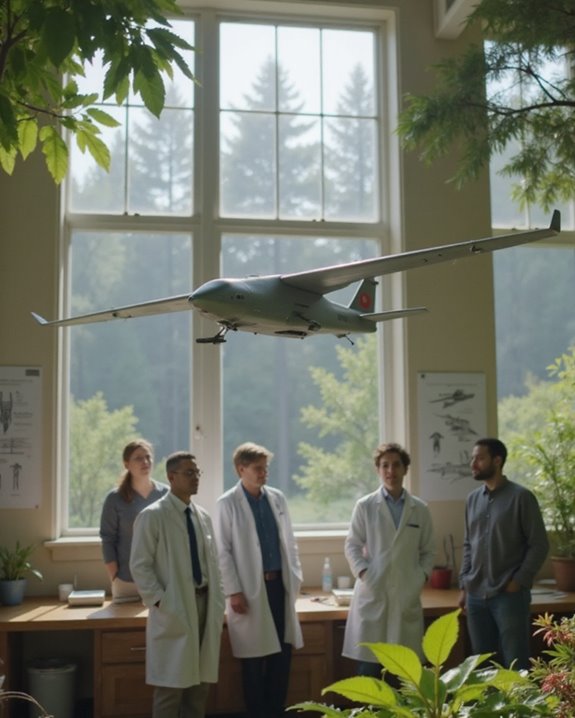
Once the hummingbird drone proved it could handle the wild world of defense, engineers and innovators couldn’t help but imagine what else it might accomplish. Pretty soon, these nimble little flyers were popping up in all sorts of places! Think about Event Security—at concerts or sports games, hummingbird drones could quietly circle overhead, keeping an eye on the crowd and alerting staff to any trouble. Border Patrol teams saw the value too, using drones to scan vast stretches for suspicious activity or lost hikers, even in pitch darkness. Facility security got easier, with drones patrolling perimeters or peeking into hard-to-reach spots. Emergency responders loved them for real-time rescue updates. It’s like the Swiss Army knife of the sky—minus the corkscrew!
Environmental Monitoring and Scientific Research
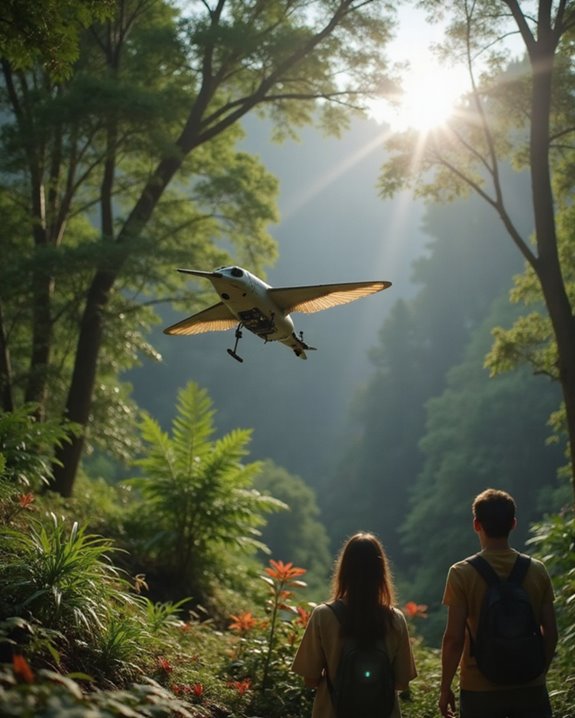
Curious where hummingbird drones might go next? Environmental monitoring and scientific research have become their latest playgrounds! Thanks to their tiny, flapping wings, these drones can sneak into tangled forests or narrow caves, collecting information that would make any scientist do a happy dance. Researchers use them to study Ecological Impacts—like how wind affects plant growth or how pollution spreads in hard-to-reach spots. With high-tech strain gauges and clever sensors, these drones gather mountains of data, which scientists then turn into colorful Data Visualization maps and 3D models. Purdue University even built one to sense changes without seeing, making it perfect for wild terrain. It’s not magic, just smart engineering—plus, who knew science could be so bird-brained and fun?
The Lasting Impact on Drone Innovation
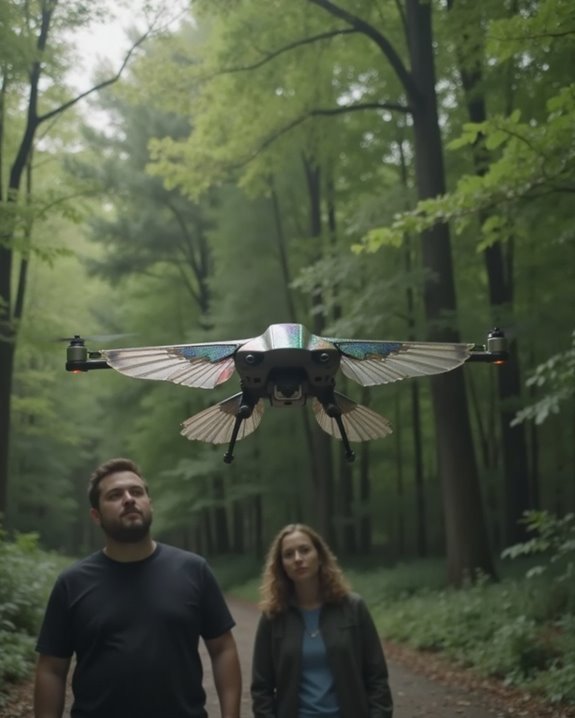
Just when it seems hummingbird drones have conquered the wildest parts of nature, their biggest legacy might actually be what they’ve sparked in the world of drone technology itself! These tiny, bird-inspired robots have changed everything, from how drones maneuver to how they sense the world. Because engineers copied hummingbirds’ agile flight and sharp senses, drones today can sneak through disaster zones or zip around city corners with ease. That’s impressive, but it also brings up big Ethical Implications—should drones that look like birds be used for spying? As for Cultural Influence, the idea of a mechanical hummingbird has found its way into movies, art, and even classroom robotics kits. Who knew a little bird could inspire so much innovation—and debate!
Frequently Asked Questions
How Much Does a Hummingbird Drone Cost to Manufacture?
The exact manufacturing cost of a hummingbird drone prototype remains undisclosed, as material costs and labor efficiency are not publicly detailed. Commercial models, produced at scale, likely benefit from improved labor efficiency and reduced material costs per unit.
Can Hummingbird Drones Be Purchased by Private Individuals?
Hummingbird drones face minimal purchase restrictions, allowing individual ownership by private buyers. These drones are available through online retailers and specialty stores, enabling enthusiasts and racers to legally purchase, own, and operate various Hummingbird models for personal use.
What Is the Maximum Flight Time of the Nano Hummingbird?
The maximum flight time of the Nano Hummingbird drone reaches up to 11 minutes. Flight endurance depends on several duration factors, including battery configuration, with continuous hover endurance typically sustained for about eight minutes without external power.
Are Hummingbird Drones Affected by Weather Conditions Like Rain?
Rain impact greatly limits the weather resilience of Hummingbird drones. Lacking waterproof features, exposure to rain can damage electronic components and destabilize flight, making these drones unsuitable for operation in wet or extreme weather conditions.
How Are Hummingbird Drones Powered and Recharged?
Hummingbird drones draw their lifeblood from featherweight 1S batteries, the ultimate power sources. Recharged at lightning speed through PH2.0-compatible chargers, these meticulous recharge methods keep them aloft, ensuring relentless, efficient flight in high-stakes racing environments.

